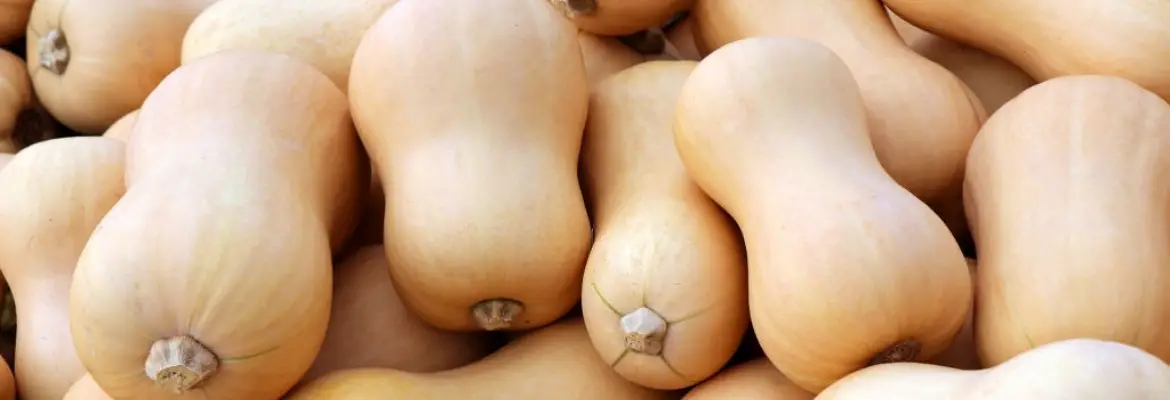Butternut squash, one of the most widely grown squash, is a winter squash. Butternuts are smooth, long-necked bowling-pin- or bell-shaped squashes that produce golden-yellow flesh and a hard, rind that is pinkish-tan in color.
The soft, tender flesh of this bulbous fruit is infused with a cream flavor that has a relatively small seed cavity. The quality of the food and the consistency of flavor make this an old favorite.
Butternut squash weighs from 1000 – 2000 grams ( 2 – 5 pounds or 35 – 70 ounces).
Scientific name of Butternut Squash
Cucurbita moschata
Other names of Butternut Squash
- Butternut pumpkin
- Gramma
- Sweet pumpkin
Nutrition facts of Butternut Squash
*Serving size = 100 grams = 3.55 Ounces = 1/2 cup
*DV= % Daily Value (%DV indicates how much nutrients contribute to a person’s daily diet from a serving of a food. DV assists you in determining whether or not a serving of food is high or low in a particular nutrient.)
| Nutrient | Amount | Unit | DV |
|---|---|---|---|
| Calories | 45 | KCAL | |
| Fat | 0.1 | GRAM | 0% |
| Protein | 1 | GRAM | 2% |
| Carbohydrate | 11.69 | GRAM | 4% |
Calories by source in Butternut Squash:
- Calories by carbohydrate in Butternut Squash = 93%
- Calories by fat in Butternut Squash = 2%
- Calories by protein in Butternut Squash = 5%
Fats and Fatty Acid profile of Butternut Squash:
- Polyunsaturated fat (PUFA) in Butternut Squash = 60%
- Saturated fat (SF) in Butternut Squash = 30%
- Monounsaturated fat (MUFA) in Butternut Squash = 10%
Detailed vitamin profile of Butternut Squash, vitamin A, vitamin B12, vitamin B6, vitamin C, vitamin D, Folate, Niacin, Thiamin, and Riboflavin is shown in the chart at the end of the article.
Detailed mineral profile of Butternut Squash, Sodium(Na), Calcium(Ca), Copper(Cu), Iron(Fe), Magnesium(Mg), Selenium(Se), Phosphorus(P), Potassium(K) and Zinc(Zn) is shown the chart at the end of the article.
Check freshness in Butternut Squash
- Select a butternut squash with firm rind
- Should not be squishy. Should be dense and heavy for its size
- Should have shine and feel slippery to the touch and not sticky
Availability of Butternut Squash
- Generally butternut squash is available round the year
How to store Butternut Squash
- Butternut squash can be stored at room temperature for about 1-2 months
- Avoid direct heat and sunlight while storing butternut squash at room temperature
- Cut butternut squash pieces can be sorted in tight container for up-to 4-5 days
Complete nutrition facts of Butternut Squash
Click on the link HERE to download high quality, high resolution and print ready PDF version of the Butternut Squash nutrition chart/infographic.



